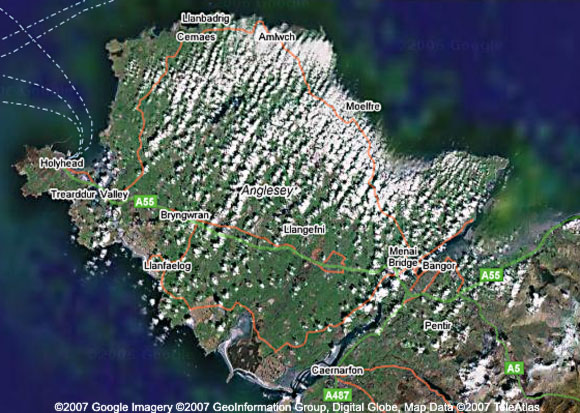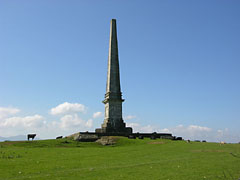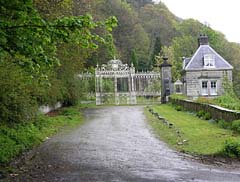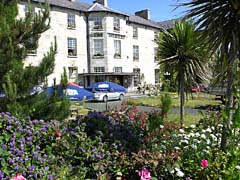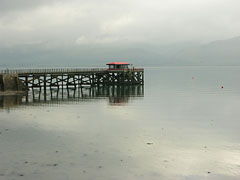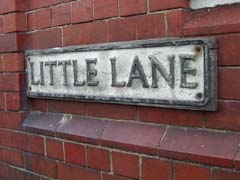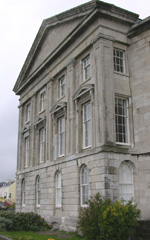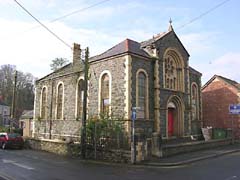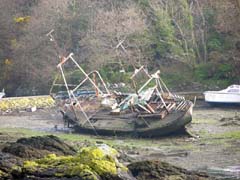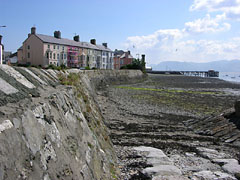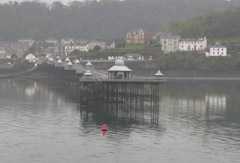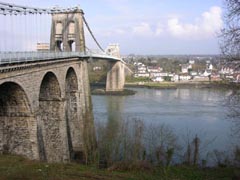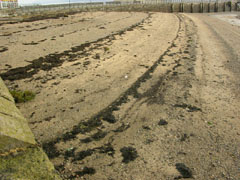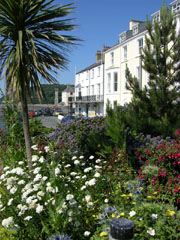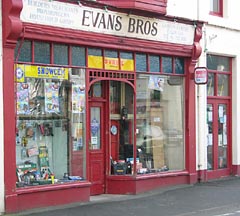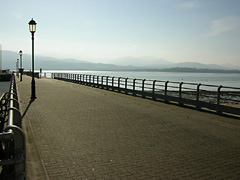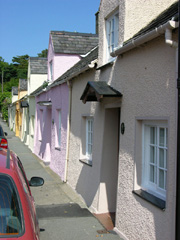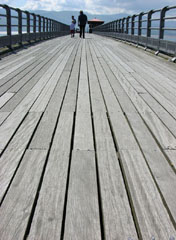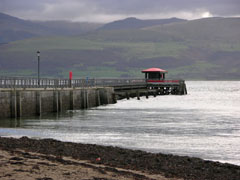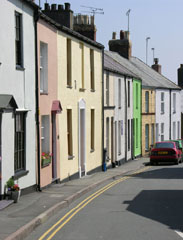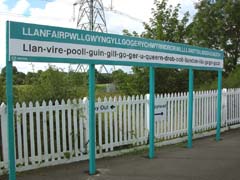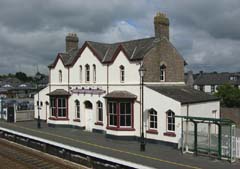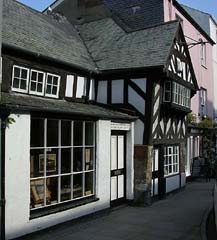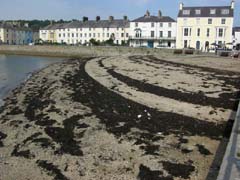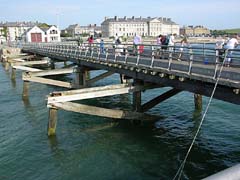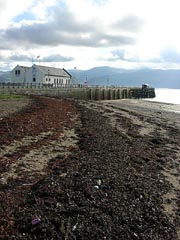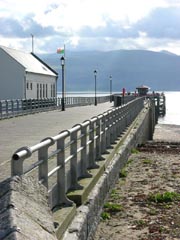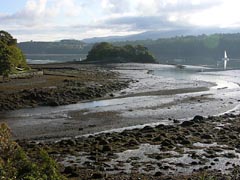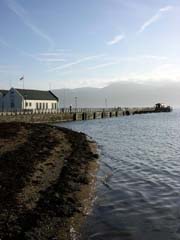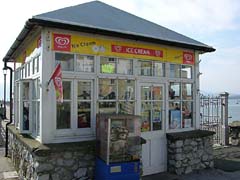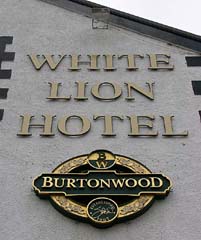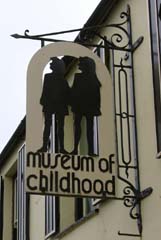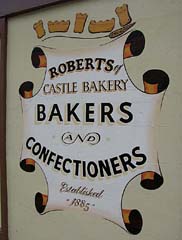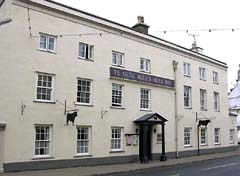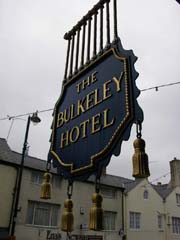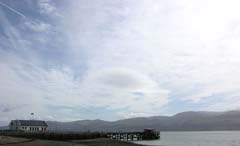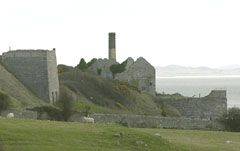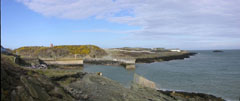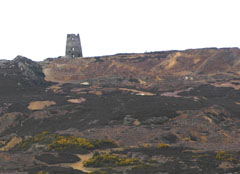Anglesey (Welsh: Ynys M�n), is a predominantly Welsh-speaking island and county at the northwestern extremity of Wales. It is separated from the mainland by a narrow stretch of water known as the Menai Strait. It is connected to the mainland by two bridges, the original Menai Suspension Bridge (carrying the A5), built by Thomas Telford in 1826 as a road link, and the newer, twice reconstructed Britannia Bridge (originally the work of Robert Stephenson), which carries the A55 and the North Wales Coast Railway line. The A5025 circles most of its coast. As well as the Isle of Anglesey, the county of Anglesey covers a number of smaller islands, in particular Holy Island.
With an area of 275 square miles, Anglesey is the largest Welsh island, and the fifth largest surrounding Britain.
History
Historically, Anglesey has long been associated with the Druids. In c. AD 60 the Roman general Suetonius Paullinus, determined to break the power of the druids (dreamers of the time of Boudicca, attacked the island, destroying the shrine and the sacred groves. The Romans called the island Mona. After the Romans, the island was invaded by Vikings, Saxons, and Normans before falling to King Edward I of England, in the 13th century.
M�n is the Welsh name of Anglesey, but its origin is obscure, appearing first during the Roman era as 'Mona'. The 'English' name is in fact dervied from the Old Norse, meaning the 'Ongull's Island'. The alternative isle (ey) of the Angles is discredited. Old Welsh names are Ynys Dywyll ("Dark Isle") and Ynys y Cedairn (cedyrn or kedyrn; "Isle of brave folk"). It is the Mona of Tacitus (Ann. xiv. 29, Agr. xiv. 18), Pliny the Elder (iv. 16) and Dio Cassius (62). It is called Mon Mam Cymru ("Mon, Mother of Wales") by Giraldus Cambrensis, due to the claimed ability of the fertile land to produce enough food for the whole of Wales. In reality, the claim was probably more directed at an ability to sustain Gwynedd. Clas Merddin, and Y f�l Ynys (honey isle) are other names. According to the Triads (67), Anglesey was once part of the mainland, as geology proves. The island was the seat of the Druids, of whom 28 cromlechs remain on uplands overlooking the sea; e.g. at Pl�s Newydd. The Druids were attacked in 61 by Suetonius Paulinus, and again in 78 by Agricola. The present road from Holyhead to Llanfairpwllgwyngyll was originally a Roman road. British and Roman camps, coins and ornaments have been dug up and discussed, especially by the 19th century romantic antiquarian, the Hon. Lord Stanley of Penrhos. The foundations of Holyhead are Caer Gybi Roman.
At the end of the Roman period in the late 4th Century and early 5th Century pirates from Ireland colonised Anglesey and the nearby Llŷn Peninsula. In response to this a Brythonic warlord from the north of Britain called Cunedda came to the area and began the process of driving the Irish out. This process was continued by his son Einion ap Cunedda and grandson Cadwallon Lawhir until the last Irish were defeated in battle in 470. As an island M�n would usually be a good defensive position and because of this it was the site of the court or Llys of the kings and princes of Gwynedd at Aberffraw. Apart from a devastating Danish raid in 853 this was to remain the case until the thirteenth century when improvements to the English navy made it indefensible.
There are numerous Megalithic monuments and Menhirs present on Anglesey testifying to the presence of humankind from pre-history.
Geography
Anglesey is a relatively low-lying island with slight risings such as Parys Mountain, Cadair Mynachdy (or Monachdy, i.e., "chair of the monastery"; there is a Nanner, "convent", not far away), Mynydd Bodafon and Holyhead Mountain.
Anglesey has many small towns scattered all around the island, making it quite evenly populated. Beaumaris (Welsh: Biwmares), to the south of the island, features Beaumaris Castle, built by Edward I as part of his campaign in North Wales. The town of Newborough (Welsh: Niwbwrch), created when the townfolk of Llanfaes were relocated to make way for the building of Beaumaris Castle, includes the site of Llys Rhosyr, another of the courts of the mediaeval Welsh princes and which features one of the oldest courtrooms in the United Kingdom. Beaumaris acts as a yachting centre for the region with many boats moored in the bay or off Gallows point. Llangefni is located in the centre of the island and is also the island's administrative centre. The town of Menai Bridge (Welsh: Porthaethwy) expanded when the first bridge to the mainland was being built, in order to accommodate workers and construction. Up until that time Porthaethwy had been one of the principal ferry crossing points from the mainland. A short distance from this town lies Bryn Celli Ddu, a Stone Age burial mound. The town of Amlwch is situated in the northeast of the island and was once largely industrialised, having grown during the 18th century supporting the copper mining industry at Parys Mountain.
The island also has the village with the longest official place name in the United Kingdom, Llanfairpwllgwyngyllgogerychwyrndrobwllllantysiliogogogoch. Other towns and settlements include Cemaes, Benllech, Pentraeth, Gaerwen, Dwyran, Bodedern and Rhosneigr. The Anglesey Sea Zoo is a local tourist attraction, providing a look at and descriptions of local marine wildlife from lobsters to conger eels. All the fish and crustaceans on display are caught around the island and are placed in reconstructions of their natural habitat. They also make salt (evaporated from the local sea water) and commercially breed lobsters, for food, and oysters, for pearls, both from local stocks.
The island's entire rural coastline had been designated an Area of Outstanding Natural Beauty and features many sandy beaches, especially along its eastern coast between the towns of Beaumaris and Amlwch and along the western coast from Ynys Llanddwyn through Rhosneigr to the little bays around Carmel Head. The northern coastline is charecterised by dramatic cliffs interspresed with small bays. The Anglesey Coastal Path is a 125-mile path which follows nearly the entire coastine. Tourism is now the most significant economic activity on the island. Agriculture provides the secondary source of income for the island's economy, with the local dairies being amongst the most productive in the region. There is also a nuclear power station, at Wylfa Head on the north coast.
Major industries are restricted to Holyhead which supports an aluminium smelter and the Amlwch area where the Wylfa nuclear power station is located close to a former bromine extraction plant. The nuclear power station is scheduled to close in or around 2010, and the aluminium smelting operation is likely to close as a consequence of losing its affordable local electricity supply. There are a wide range of smaller industries, mostly located in industrial and business parks especially at Llangefni and Gaerwen. These industries include an abbatoir and fine chemicals manufacture as well as factories for timber production, aluminium smelting, fish farming and food processing.
Wind power is developing on Anglesey with more than 20 commercial wind turbines established near to the north coast. The strong sea currents around the island are also attracting the interest of electricity generation companies interested in exploiting tidal power.
The island is also on one of the major routes from Britain to Ireland, via ferries from Holyhead, off the west of Anglesey on Holy Island, to D�n Laoghaire and Dublin Port.
There are a few lakes mostly in the west, such as Cors cerrig y daran, but rivers are few and small. There are two large water supply reservoirs operated by Dwr Cymru Welsh Water. These are Llyn Cefni in the centre of the island, which is fed by the headwaters of the Afon Cefni, and Llyn Alaw to the north of the island. Llyn Llywenan is the largest natural lake on the island.
The climate is humid but generally equable due the effects of the gulf stream bathing the island. The land is of variable quality and it may have been more fertile in the past.
Ecology and conservation
Much of Anglesey is covered with relatively intensive cattle and sheep farming aided by modern agro-chemicals. In these areas there is little of ecological conservation worth. However there are a number of important wet-land sites which have protected status. In addition the several lakes all have significant ecological interest including their support for a wide range of aquatic and semi-aquatic bird species. In the west, the Malltraeth marshes are believed to be supporting an occasional visiting Bittern and the nearby estuary of the Afon Cefni supports a bird population made internationally famous by the paintings of Charles Tunnicliffe.
The sheer cliff faces at South Stack near Holyhead provide nesting sites for huge numbers of auks including Puffins, Razorbills and Guillemots together with Choughs and Peregrine falcons.
Three sites on Anglesey are important for breeding terns - see Anglesey tern colonies.
Anglesey is home to two of the UK's small number of remaining colonies of Red Squirrels, at Pentraeth and Newborough.
Almost the entire coastline of Anglesey is designated an Area of Outstanding Natural Beauty.
Culture - Anglesey hosted the National Eisteddfod in 1999.
- Anglesey/Ynys M�n is a member island of the International Island Games Association. The next Island Games will be held in 2007 on Rhodes (Greece). The 2009 Games will be held on the �land Islands (Finland) and the 2011 Games will be held on the Isle of Wight (UK). In the 2005 Games, held on the Shetland Islands, Anglesey/Ynys M�n came 11th on the medal table with 4 gold, 2 silver and 2 bronze medals. The Isle of Anglesey/Ynys M�n Island Games Association plan to make a bid to host the 2015 Island Games.
- Anglesey has featured in the Channel 4 television archaeology series, 'Time Team' (series 14) - programme transmission date 4 February 2007.
- Anglesey has the second highest population of native Welsh language speakers in Wales (70% of the population).
Geology
The geology of Anglesey is notably complex and is frequently used for geology field trips by schools and colleges. Younger strata in Anglesey rest upon a foundation of very old pre-Cambrian rocks that appear at the surface in four areas:
1. a western region including Holyhead and Llanfaethlu,
2. a central area about Aberffraw and Trefdraeth,
3. an eastern region which includes Newborough, Caerwen and Pentraeth and
4. a coastal region at Glyn Garth between Menai Bridge and Beaumaris.
These pre-Cambrian rocks are schists and slates, often much contorted and disturbed. The general line of strike of the formations in the island is from north-east to south-west. A belt of granitic rocks lies immediately north-west of the central pre-Cambrian mass, reaching from Llanfaelog near the coast to the vicinity of Llanerchymedd. Between this granite and the pre-Cambrian of Holyhead is a narrow tract of Ordovician slates and grits with Llandovery beds in places; this tract spreads out in the north of the island between Dulas Bay and Carmel Point. A small patch of Ordovician strata lies on the northern side of Beaumaris. In parts, these Ordovician rocks are much folded, crushed and metamorphosed, and they are associated with schists and altered volcanic rocks which are probably pre-Cambrian. Between the eastern and central pre-Cambrian masses carboniferous rocks are found. The carboniferous limestone occupies a broad area south of Lligwy Bay and Pentraeth, and sends a narrow spur in a south-westerly direction by Llangefni to Malltraeth sands. The limestone is underlain on the north-west by a red basement conglomerate and yellow sandstone (sometimes considered to be of Old Red Sandstone age). Limestone occurs again on the north coast about Llanfihangel and Llangoed; and in the south-west round Llanidan on the border of the Menai Strait. Puffin Island is made of carboniferous limestone. Malltraeth marsh is occupied by coal measures, and a small patch of the same formation appears near Tall-y-foel Ferry on the Menai Strait. A patch of granitic and felsitic rocks form Parys Mountain, where copper and iron ochre have been worked. Serpentine (Mona Marble) is found near Llanfairynneubwll and upon the opposite shore in Holyhead. There are abundant evidences of glaciation, and much boulder clay and drift sand covers the older rocks. Patches of brown sand occur on the south-west coast.
Sons and daughters of Anglesey
Born on Anglesey - Tony Adams - actor (Anglesey, 1940)
- William Bulkeley - diarist (1691 - 1760 Brynddu, Llanfechell, Anglesey)
- Dic Evans - Seaman and coxswain two-times winner of the RNLI gold medal for bravery - (Moelfre, 1905)
- Dawn French - actress, writer, comedian (Holyhead, 1957)
- Hugh Griffith - Oscar winning actor (Marianglas, 1912)
- Steve Griffiths - writer (Anglesey 1949
- Owain Gwynedd - prince (Anglesey, c1100)
- Wayne Hennessey - footballer - currently goalkeeper with Wolves (Anglesey 1987)
- Captain Owen Jones - volunteer lifeboatman winner of the RNLI gold medal for bravery (Anglesey)
- Mr Thomas William Jones - able seaman on RMS Titanic who took charge of Lifeboat #8 (Anglesey, c1880)
- William Jones - mathematician (Llanfihangel Tre'r Beirdd, 1675)
- John Morris-Jones - Welsh grammarian and poet (Llandrygarn, 1864)
- Glenys Kinnock - politician (Holyhead, 1944)
- Wendy Orme - screenwriter (Anglesey, 1911)
- Edward Roberts - second coxswain winner of the RNLI gold medal for bravery (Anglesey)
- Wilf Roberts - landscape artist (Anglesey, 1941)
- Ifor Owain Thomas - tenor (Pentraeth, 1892)
- Hugh Owen Thomas - pioneering orthopaedic surgeon (Anglesey, 1833)
- Sir Kyffin Williams RA - landscape painter (Anglesey, 1918 - 2006)
Lived on Anglesey - Henry Austin Dobson - poet and essayist (Plymouth, Devon 1840)
- Tristan Hughes - writer (Canada)
- Aled Jones - singer and television presenter (Bangor, 1970)
- Ian "Lemmy" Kilmister - heavy metal bass player and singer (Stoke-on-Trent, 1945)
- Matthew Maynard - cricketer (Oldham, Lancashire 1966)
- Gwyn Parry - writer (Wales)
- Gary Pritchard - sports journalist & broadcaster (Bangor, 1970)
- Eric Roberts - baritone (Conwy, North Wales)
- Charles Tunnicliffe - wildlife artist (Chester, 1901)
- Naomi Watts - actress (Kent, 1968)
- Rex Whistler - artist (Eltham, Kent 1905)
- Maurice Wilks - car designer
Government
Anglesey (together with Holy Island) is one of the thirteen traditional counties of Wales. In medieval times, before the conquest of Wales in 1283, M�n often had periods of temporary independence as it was frequently bequeathed to the heirs of kings as a sub kingdom of Gwynedd. The last times this occurred were for a few years after 1171 following the death of Owain Gwynedd when the island was inherited by Rhodri ab Owain Gwynedd and again between 1246 - c.1255 when it was given to Owain Goch as his share of the kingdom. Following the conquest of Wales by Edward I it was created a county under the terms of the Statute of Rhuddlan of 1284. Prior to this it had been divided into the cantrefi of: In 1974 it formed a district of the new large administrative county of Gwynedd, until in the 1996 reform of local government it was restored as an administrative county. The county council is a unitary authority and is named "Isle of Anglesey County Council" (Welsh: Cyngor Sir Ynys M�n). While there is currently a majority of independent councillors, the council is under no overall control, as the members do not generally divide along party lines. The only party group on the council is that of Plaid Cymru. There are five non-partisan groups on the council, containing a mix of party and independent candidates. The largest of these groups is M�n Ymlaen/Anglesey Forward, with 15 members out of the 40 in total. |


